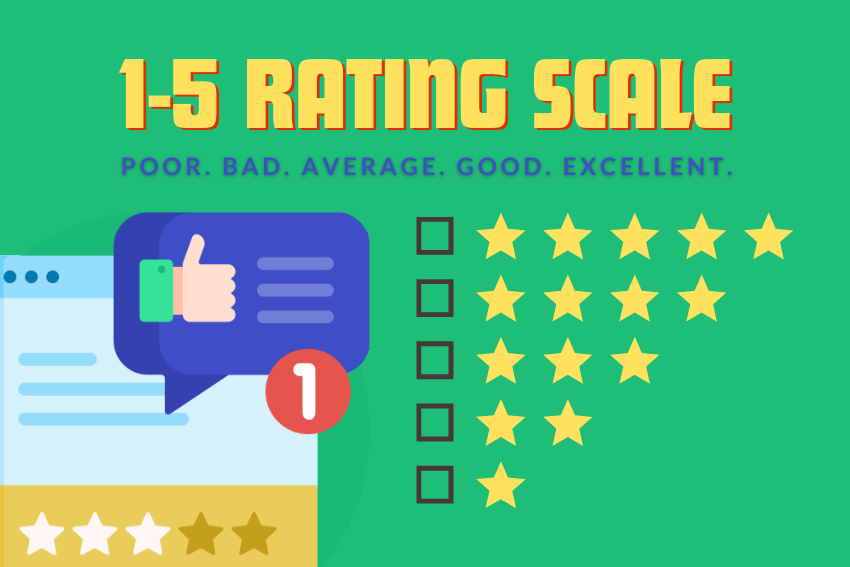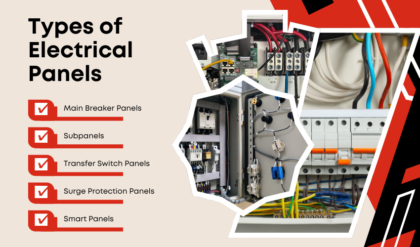Introduction to 1-5 Rating Scale
Today, it is becoming increasingly important to be able to rate and give feedback in a number of industries around consumer products and online services. One of the methods of using this tool is to use the 1-5 rating scale. The simple but effective system allows people to express their opinion or to assess an experience in a straight forward way.

The 1-5 rating scale is one of the best things, because it makes a more structured way of measuring subjective feelings that are quite easier to analyze, to compare it and decision based. If you are a teacher, a manager, a consumer, this scale will help you communicate on better terms.
Get a complete rundown on the history (and the controversies), the structure, applications and more in this comprehensive guide to the 1-5 rating scale (what it is, how it works, and how to use it to get the best scores possible). By the end of this guide, we will have helped you to understand a bit more about this rating system and how it is utilized to give meaningful evaluations and feedback.
What is a 1-5 Rating Scale?
A 1-5 rating scale is a simple way of quantifying subjective opinions, or even subjective experiences. Typically, it consists of five points where:
- 1 represents the lowest possible score (e.g., “Very Dissatisfied” or “Poor”),
- 2 indicates “Dissatisfied” or “Fair”,
- 3 signifies “Neutral” or “Average”,
- 4 conveys “Satisfied” or “Good”,
- 5 denotes the highest score (e.g., “Very Satisfied” or “Excellent”).
Because it is simple, this scale is considered particularly desirable, as it enables respondents to quickly express their feelings or opinions without having to elaborate ideas in long answers.
Common Contexts of Use
The versatility of the 1-5 rating scale makes it applicable in various sectors, including:
- Customer Satisfaction Surveys: Used to quickly gauge customer satisfaction levels with products or services.
- Product Feedback: Captures contextual feedback directly within applications to inform product improvements.
- Employee Performance Evaluations: Assesses employee competencies and contributions in a structured manner.
- Event Feedback: Evaluates attendee satisfaction and experiences after events like conferences or workshops.
- Healthcare Assessments: Measures patient satisfaction and symptom severity to improve care quality.
- Market Research: Analyzes consumer preferences and perceptions to guide marketing strategies.
- Educational Assessments: Rates student performance and participation to provide clear feedback on learning outcomes.
The intuitive nature of this scale facilitates quick analysis, making it a preferred choice for collecting feedback across a variety of sectors.
Benefits of Using a 1-5 Rating Scale
Since the 1-5 rating scale gives quantitative information that is easy to analyze, it is an ideal choice for many feedback collection efforts. The main advantages of rating scales are given below.
Simplicity and Ease of Use
This 1-5 rating scale makes the survey easy to understand and participate in, so that it’s easy for your respondents to understand and get in the mood. It’s this simplicity that encourages high response rates by eliminating the need to give participants a lot of complex options.
Quick Data Collection
This scale makes feedback collection faster. It’s much easier for respondents to select a rating without having to be so specific with their answers, which is great because it reduces the burden of response time.
Quantifiable Insights
Responses can be easily measured using a numerical scale. Each rating corresponds to a specific value, making it possible to directly analyze and compare data across different questionnaires or surveys.
Versatility Across Contexts
You can use it for everything from customer satisfaction surveys and employee performance evaluations and product feedback. It’s adaptable enough to be a useful tool for collecting data in many areas.
Facilitates Easy Analysis
The numerical nature of the scale simplifies data analysis. Researchers can quickly calculate averages, identify trends, and generate reports without the need for complex coding or interpretation of qualitative data.
Encourages Honest Feedback
Honest responses can be encouraged by the design of the scale, in which the respondent is not pressured to provide detailed explanations. And this can lead to more honest responses which are necessary for making informed decisions.
Effective for Measuring Severity
This 1-5 scale works very well for rating the severity or magnitude of thoughts, allowing organizations to know not only if they are satisfied or not, but also how intense that feeling is.
Designing Effective 1-5 Rating Scale Questions
To get the most out of a 1 to 5 rating scale, the questions need to be clear and unbiased. Direct questions are asked, focusing on what the respondent is rating. For example, is asking, ‘How good was the service?’ or, instead, ‘On a scale of 1-5, how satisfied were you with the service you received?’
Types of Questions
Different types of questions can be formulated to extract a variety of feedback. Some examples include:
- Satisfaction Questions: “How satisfied are you with your overall experience?”
- Performance Questions: “How would you rate the quality of the training provided?”
- Likelihood Questions: “On a scale of 1-5, how likely are you to recommend our service to others?”
Tailoring questions to align with specific feedback objectives ensures that the data collected is relevant and actionable.
Avoiding Common Pitfalls
The 1-5 rating scale is user-friendly, but we must be wary of bias. For example, leading questions will distort the results. Instead of asking answer-provoking questions, ask neutral questions. Also keep the context of the questions in mind; for example, when questions are about a recent experience, make sure respondents know how far back (in history) the experience in the feedback should go.
Analyzing Data from 1-5 Rating Scales
These techniques enable organizations to gain meaningful insights from their feedback, ultimately guiding improvements and increasing overall satisfaction.
Interpreting Results
The data is collected as a rating scale of 1-5, which interprets the numerical value of respondents. There is a number for each level of satisfaction or agreement, with 1 usually meaning the lowest and 5 meaning the highest. It is important to understand the distribution of responses (and how your service’s rating compares to others) and if the majority of respondents give you a ‘4 or 5’ it suggests the service is performing well. Conversely, ratings higher than 1 or 2 may indicate areas in need of improvement.
Calculating Averages
One of the simplest methods to analyze 1-5 rating scale data is to calculate the average (mean) score for each question. This provides a quick snapshot of overall sentiment. For example, if a survey question receives ratings of 3, 4, 5, 2, and 4, the average score would be calculated as follows:
![]()
This average score can help organizations gauge general satisfaction levels and track changes over time.
Identifying Trends
Organizations can detect trends in customer satisfaction or employee engagement by analyzing data across multiple surveys. Suppose, for example, the average rating of a product improves steadily over a few months, this means that successful changes or improvements have been made to the product recently based on past feedback. On the other hand, a declining trend may indicate that some problems need to be dealt with.
Visualizing Data
Data visualization is a great way to share findings for a 1-5 rating scale. The distribution of a group of responses can be illustrated using a graph or chart, for example a bar chart or pie chart. For example, a bar chart that reports the percentage of respondents indicating that they gave a service a score of 1, 2, 3, 4, or 5 can provide a simple, at-a-glance view of the overall level of satisfaction.
Segmenting Data
Organizations can take the segmented data and work to gain deeper insights, wherein the data is segmented in multiple ways based on demographics or other relevant factors (such as age, location or even purchase history). This kind of analysis enables a nuanced analysis; to find out exactly which groups may have greater or lesser experiences or satisfaction. For example, if younger customers consistently rate a product lower than older customers (and they are not ten years younger and constantly trying to disrupt the market), then targeted improvements can be made to concern them.
Comparative Analysis
The results of different questions or survey questions can be compared. For example, if a company conducts a survey of customer service and another of product quality, the average survey can also show how problems in one area affect the results of another. This allows us to make strategic decisions and allocate resources from a holistic perspective.
Using Statistical Methods
You can use statistical methods such as standard deviation to better understand the variation in your responses. A low standard deviation means that respondents agree on their ratings, a high deviation means there is a range of opinions. This information can be important for understanding consensus, or lack of it, among respondents.
Best Practices for Implementing 1-5 Rating Scales
Survey Design Tips
- Clear and Concise Questions: Ensure that each question is straightforward and easy to understand. Ambiguity can lead to confusion and inaccurate responses.
- Logical Flow: Structure the survey in a logical order, grouping similar topics together. This helps respondents stay focused and engaged.
- Balanced Scale: Use a balanced scale that provides an equal number of positive and negative options. This encourages more thoughtful responses and reduces bias.
- Pilot Testing: Conduct a pilot test of your survey with a small group to identify any issues with question clarity or survey flow before full deployment.
Feedback Collection Strategies
- Anonymity Assurance: Assure respondents that their feedback is anonymous. This can encourage more honest and candid responses.
- Incentives for Participation: Consider offering incentives, such as discounts or entry into a prize draw, to increase response rates.
- Follow-Up Reminders: Send gentle reminders to participants who have not yet completed the survey. Timing these reminders appropriately can significantly boost completion rates.
- Use of Open-Ended Questions: Alongside the 1-5 rating questions, include a few open-ended questions to gather qualitative insights that can provide context to the numerical ratings.
Alternatives to the 1-5 Rating Scale
- 1-10 Rating Scale: It gives more granularity than a 1-5 scale, making it easier for respondents to provide a more precise answer to their opinions. And it can be useful when things are not as black and white as they might seem.
- Likert Scale: Often used in social science research, Likert scales typically range from “strongly disagree” to “strongly agree.” A format such as that can better capture the intensity of the feelings this format is capable of.
- Binary Scales: In many cases, a simple yes or no (or agree or disagree) type response will be enough for certain applications—when it is just a matter of gauging someone’s clear preference.
Conclusion
The 1-5 rating scale is a great way to collect feedback in many different contexts. With its simplicity and flexibility, it has become a popular tool for conducting surveys for organizations that want to find out what is needed quickly and in a timely manner. By following best practices in survey design and feedback collection, you can get the best out of this rating scale.
If you are integrating feedback collection, check out the 1-5 rating scale to see if it might be worth adding it into the mix. Whatever you are measuring with this scale, from customer satisfaction, employee performance, and product feedback, you will be able to use that data to make better decisions and provide better solutions. Structured feedback has the power to help you gain a better understanding of your audience and drive real change!





